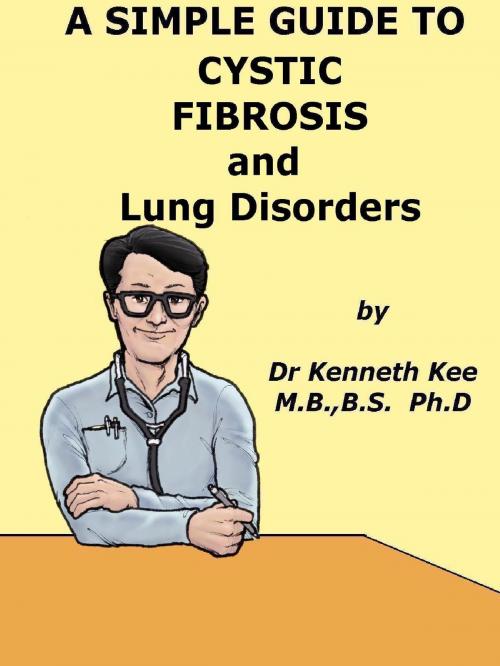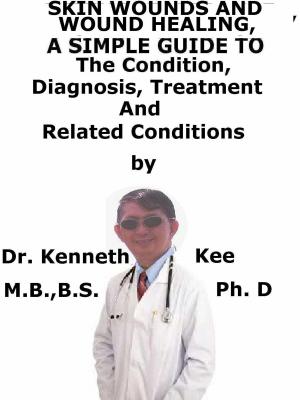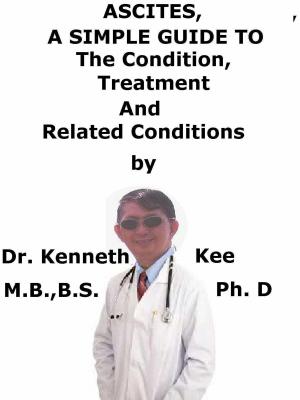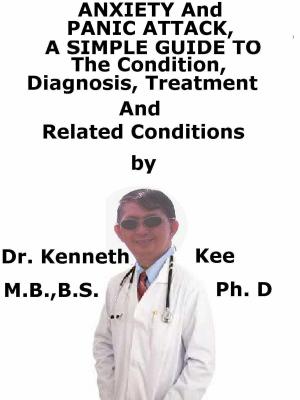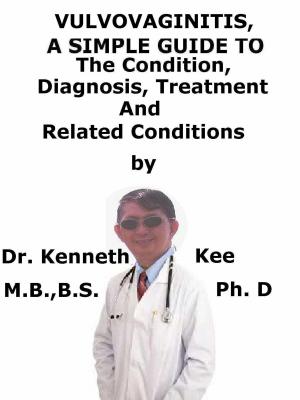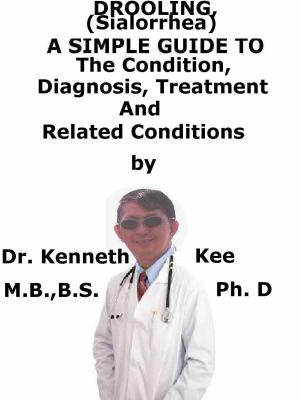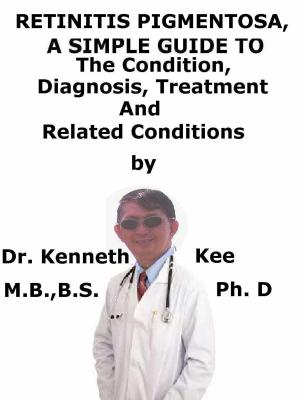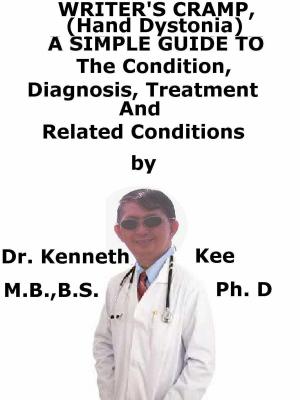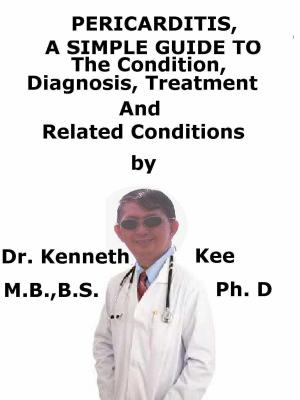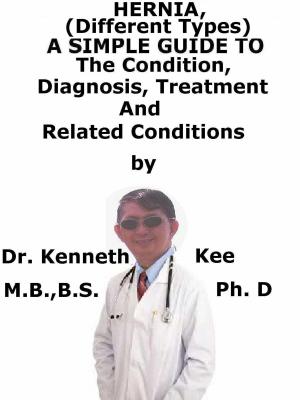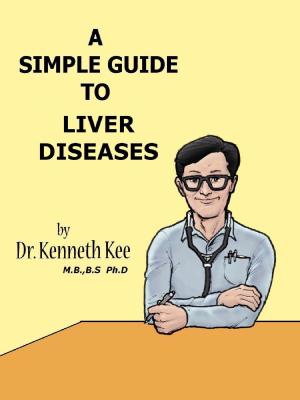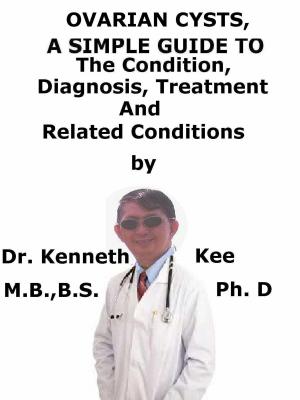A Simple Guide to Cystic Fibrosis and Lung Disorders
Nonfiction, Health & Well Being, Medical, Specialties, Pulmonary & Thoracic, Health, Ailments & Diseases, Respiratory| Author: | Kenneth Kee | ISBN: | 9781301987276 |
| Publisher: | Kenneth Kee | Publication: | October 13, 2013 |
| Imprint: | Smashwords Edition | Language: | English |
| Author: | Kenneth Kee |
| ISBN: | 9781301987276 |
| Publisher: | Kenneth Kee |
| Publication: | October 13, 2013 |
| Imprint: | Smashwords Edition |
| Language: | English |
What are Lung Diseases?
Lung diseases can be divided into:
-
lung infections such as pneumonia, tuberculosis, influenza, legionnaire’s disease
-
obstructive diseases of the lungs such as cystic fibrosis, pneumoconiosis, fibrosing alveolitis
-
lung cancer and tumors
-
bronchial asthma, bronchitis, bronchiolitis
-
Pleural diseases of the lung including pleurisy. Pleural effusion, pneumothorax
-
Pulmonary hypertension and embolism
Cystic Fibrosis
What is Cystic fibrosis?
Cystic fibrosis is an inherited recessive genetic disease that causes thick, sticky mucus to build up in the lungs, digestive tract, and other secretory glands such as salivary, sweat, sinuses, liver and sex organs.
Cystic fibrosis is one of the most common chronic lung diseases in children and young adults.
What is the cause of Cystic fibrosis?
Cystic fibrosis (CF) is caused by a defective recessive gene which is passed through the families.
It causes the body to produce abnormally thick and sticky fluid, called mucus that builds up in the air passages and blocks the breathing tubes of the lungs.
The thick, sticky mucus also can block ducts in the pancreas the organ that helps to break down and absorb food. This results in the digestive enzymes made by the pancreas to reach the small intestine. Without the enzymes the intestines cannot fully absorb fats and proteins.
This results in vitamin deficiency and malnutrition because nutrients cannot be absorbed. There will be bulky stools, intestinal gas, severe constipation, and pain or discomfort in the abdomen.
The sticky mucus results in obstruction of the air tubes in life-threatening lung infections and serious digestion problems.
The disease may also affect the sweat glands which is very high in sodium. Sweating will cause the loss of a large amount of salt resulting in dehydration and imbalance of electrolytes with adverse effects of the heart.
CF also causes infertility in men by blocking the secretions in the reproductive system and the disease can make it harder for women to get pregnant.
Most children with CF are diagnosed by age 2.
Cystic Fibrosis can be found in all ages but are more common in the 20-30 years age group.
These patients usually have a milder form of the disease.
Incidence is 1 in 1500
What are the Symptoms of Cystic Fibrosis?
Symptoms in newborns may include:
-
Delayed growth
-
Failure to gain weight normally during childhood
-
No bowel movements in first 24 to 48 hours of life
-
Salty-tasting skin
Symptoms related to bowel function may include:
-
Belly pain from severe constipation
-
Increased gas, bloating, or a belly that appears swollen (distended)
-
Nausea and loss of appetite
-
Stools that are pale or clay colored, foul smelling, have mucus, or that float
-
Weight loss
TABLE OF CONTENT
Chapter 1 The Lungs
Chapter 2 Cystic Fibrosis
Chapter 3 Chronic Obstructive Lung Disease
Chapter 4 Bronchial asthma
Chapter 5 Bronchitis
Chapter 6 Tuberculosis
Chapter 7 Pneumonia
Chapter 8 Legionnaire’s Disease
Chapter 9 Pleural Effusion
Chapter 10 Pneumothorax
Chapter 11 Lung Cancer
Chapter 12 Pulmonary Embolism
Epilogue
What are Lung Diseases?
Lung diseases can be divided into:
-
lung infections such as pneumonia, tuberculosis, influenza, legionnaire’s disease
-
obstructive diseases of the lungs such as cystic fibrosis, pneumoconiosis, fibrosing alveolitis
-
lung cancer and tumors
-
bronchial asthma, bronchitis, bronchiolitis
-
Pleural diseases of the lung including pleurisy. Pleural effusion, pneumothorax
-
Pulmonary hypertension and embolism
Cystic Fibrosis
What is Cystic fibrosis?
Cystic fibrosis is an inherited recessive genetic disease that causes thick, sticky mucus to build up in the lungs, digestive tract, and other secretory glands such as salivary, sweat, sinuses, liver and sex organs.
Cystic fibrosis is one of the most common chronic lung diseases in children and young adults.
What is the cause of Cystic fibrosis?
Cystic fibrosis (CF) is caused by a defective recessive gene which is passed through the families.
It causes the body to produce abnormally thick and sticky fluid, called mucus that builds up in the air passages and blocks the breathing tubes of the lungs.
The thick, sticky mucus also can block ducts in the pancreas the organ that helps to break down and absorb food. This results in the digestive enzymes made by the pancreas to reach the small intestine. Without the enzymes the intestines cannot fully absorb fats and proteins.
This results in vitamin deficiency and malnutrition because nutrients cannot be absorbed. There will be bulky stools, intestinal gas, severe constipation, and pain or discomfort in the abdomen.
The sticky mucus results in obstruction of the air tubes in life-threatening lung infections and serious digestion problems.
The disease may also affect the sweat glands which is very high in sodium. Sweating will cause the loss of a large amount of salt resulting in dehydration and imbalance of electrolytes with adverse effects of the heart.
CF also causes infertility in men by blocking the secretions in the reproductive system and the disease can make it harder for women to get pregnant.
Most children with CF are diagnosed by age 2.
Cystic Fibrosis can be found in all ages but are more common in the 20-30 years age group.
These patients usually have a milder form of the disease.
Incidence is 1 in 1500
What are the Symptoms of Cystic Fibrosis?
Symptoms in newborns may include:
-
Delayed growth
-
Failure to gain weight normally during childhood
-
No bowel movements in first 24 to 48 hours of life
-
Salty-tasting skin
Symptoms related to bowel function may include:
-
Belly pain from severe constipation
-
Increased gas, bloating, or a belly that appears swollen (distended)
-
Nausea and loss of appetite
-
Stools that are pale or clay colored, foul smelling, have mucus, or that float
-
Weight loss
TABLE OF CONTENT
Chapter 1 The Lungs
Chapter 2 Cystic Fibrosis
Chapter 3 Chronic Obstructive Lung Disease
Chapter 4 Bronchial asthma
Chapter 5 Bronchitis
Chapter 6 Tuberculosis
Chapter 7 Pneumonia
Chapter 8 Legionnaire’s Disease
Chapter 9 Pleural Effusion
Chapter 10 Pneumothorax
Chapter 11 Lung Cancer
Chapter 12 Pulmonary Embolism
Epilogue
